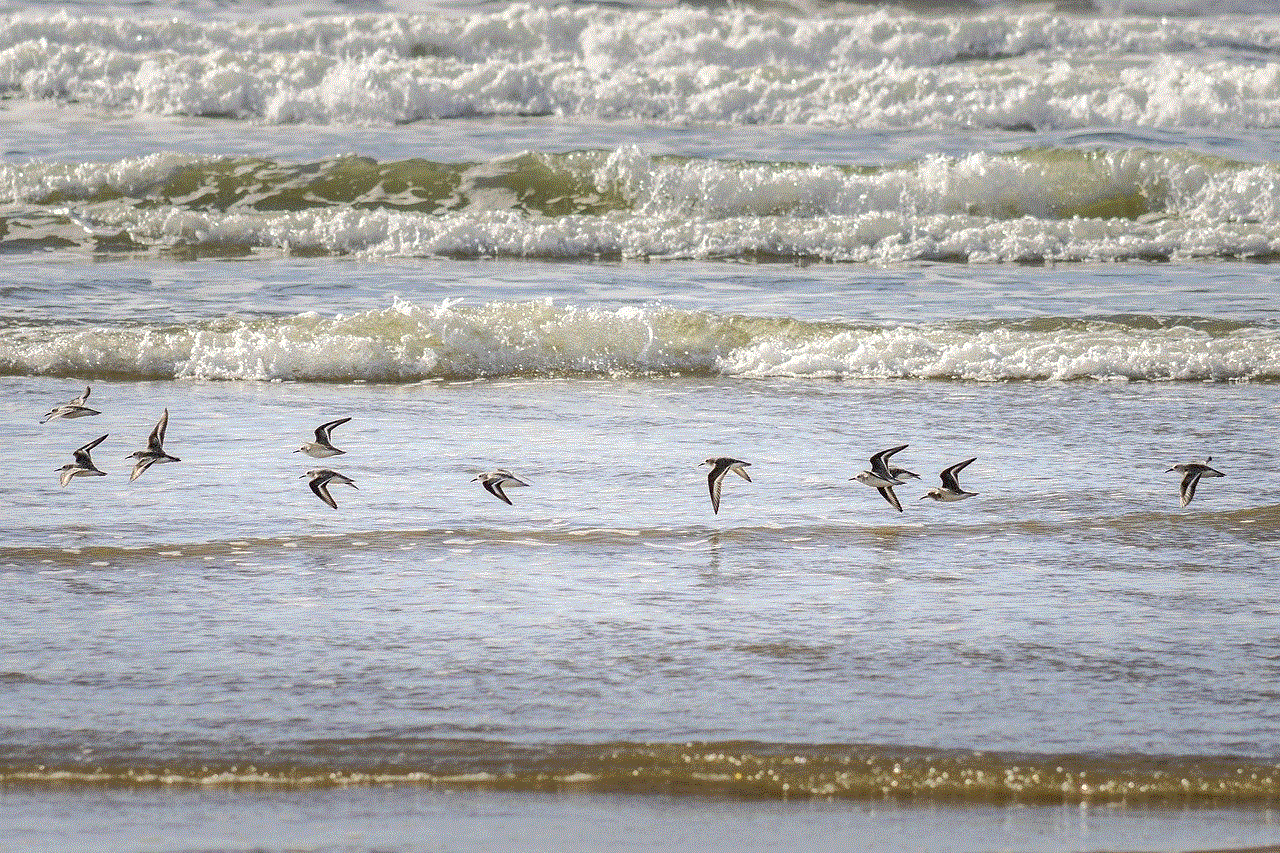my tablet wont play youtube videos
Title: Troubleshooting Guide: My Tablet Won’t Play YouTube Videos
Introduction:
YouTube has become an integral part of our daily lives, offering a vast array of videos on various topics. However, it can be frustrating when your tablet refuses to play YouTube videos. There can be several reasons why this may be happening, ranging from minor glitches to more complex issues. In this troubleshooting guide, we will explore potential solutions to help you resolve this problem and get back to enjoying your favorite YouTube content on your tablet.
1. Check Internet Connection:
The first step in troubleshooting any online streaming issue is to ensure a stable internet connection. Unstable or slow internet connectivity can hinder the playback of YouTube videos on your tablet. Try connecting to a different Wi-Fi network or switch to a cellular network to see if the issue persists.
2. Update YouTube App:
Outdated versions of the YouTube app on your tablet can often lead to video playback issues. Go to your device’s app store and check for any available updates for the YouTube app. Install the latest version and try playing a video again to see if the problem is resolved.
3. Clear Cache and Data:
The cache and data accumulated by the YouTube app over time can sometimes cause playback problems. Clearing the cache and data can help resolve these issues. To do this, go to Settings > Apps > YouTube > Storage > Clear Cache/Clear Data. Keep in mind that clearing data will log you out of the app, so make sure you remember your login credentials.
4. Restart Your Tablet:
Restarting your tablet can often resolve temporary software glitches that may be interfering with YouTube playback. Press and hold the power button until the device prompts you to turn it off. Wait for a few seconds and then turn it back on. Launch the YouTube app and check if the videos play smoothly.
5. Check Date and Time Settings:
Incorrect date and time settings on your tablet can sometimes cause issues with YouTube playback. Ensure that your tablet’s date and time settings are set to automatic. Go to Settings > Date & Time > Automatic date & time. This ensures that your device’s clock is synced with the current time and date.
6. Uninstall and Reinstall the YouTube App:
If none of the previous steps have resolved the issue, try uninstalling the YouTube app from your tablet and reinstalling it. To do this, go to Settings > Apps > YouTube > Uninstall. After the app is uninstalled, visit your device’s app store and reinstall the latest version of the YouTube app. Open the app and check if the videos now play without any issues.
7. Check for System Updates:
An outdated operating system on your tablet can sometimes cause compatibility issues with the YouTube app. Check for any available system updates by going to Settings > System > Software Update. If an update is available, install it and restart your device. Then, try playing YouTube videos to see if the problem persists.
8. Disable VPN or Proxy:
If you’re using a virtual private network (VPN) or proxy server on your tablet, it could be interfering with YouTube playback. Disable the VPN or proxy and try playing a YouTube video again. If the problem is resolved, consider adjusting your VPN or proxy settings or contacting the provider for further assistance.
9. Check for Background Data Restrictions:
Some tablets have background data restrictions that can prevent the YouTube app from streaming videos. Go to Settings > Apps > YouTube > Data usage > Background data and ensure that it is enabled. This allows the app to use data in the background and stream videos smoothly.
10. Factory Reset:
If all else fails, a factory reset can be performed as a last resort. Keep in mind that this will erase all data and settings on your tablet, so make sure to back up any important files before proceeding. To perform a factory reset, go to Settings > System > Reset > Factory data reset. Follow the on-screen instructions to complete the process.
Conclusion:
Experiencing difficulties with YouTube video playback on your tablet can be frustrating, but with the troubleshooting steps outlined in this guide, you should be able to resolve the issue. Start by checking your internet connection, updating the YouTube app, and clearing cache and data. Restart your tablet and ensure that your date and time settings are correct. If the problem persists, consider uninstalling and reinstalling the app, checking for system updates, and disabling VPN or proxy servers. Additionally, verify if there are any background data restrictions in place. Finally, if all else fails, a factory reset may be necessary. Remember to approach each step with caution, and if the problem persists, seek professional assistance.
whos looking for me free
Title: Who’s Looking for Me for Free: Unveiling the Truth Behind Online Searches
Introduction (approximately 150 words):
In this digital age, the internet has become an integral part of our daily lives. From social media platforms to search engines, we rely on online resources for various purposes. However, with this increasing reliance comes concerns about our privacy and the security of our personal information. Consequently, many individuals are curious to know who might be searching for them online, and whether they can find out for free. In this article, we will explore the concept of online search inquiries, the limitations of free services, and the potential risks involved.
1. Understanding Online Search Inquiries (approximately 200 words):
Online search inquiries refer to the act of using search engines and other online tools to find information about a person. These searches can range from casual curiosity to more serious investigations. Various reasons might prompt someone to search for another individual, such as reconnecting with long-lost friends, verifying someone’s identity, or conducting background checks.
2. The Limitations of Free Services (approximately 200 words):
While many online platforms advertise free services to find out who is looking for you, it is essential to understand their limitations. Most free services lack accuracy and reliability, often providing outdated or incomplete information. Additionally, these services may use your personal data for marketing purposes or sell it to third-party companies, compromising your privacy.
3. The Risks of Online Searches (approximately 250 words):
Conducting online searches involves certain risks, particularly when using free services. These risks include exposing sensitive personal information, falling victim to scams or identity theft, and damaging your reputation. Scammers and malicious individuals may exploit your curiosity by leading you to fake websites or encouraging you to download malware or provide personal details.



4. Paid Services: A More Reliable Option (approximately 250 words):
For those seeking more accurate and comprehensive results, paid services might be a better choice. Paid services often have access to more extensive databases and employ more advanced search algorithms. These platforms can help you uncover information about who is searching for you online, providing peace of mind and a greater level of control over your personal information.
5. Protecting Your Privacy Online (approximately 250 words):
While the desire to know who is searching for you is understandable, it is crucial to prioritize your privacy. Protecting your personal information online involves taking proactive steps such as regularly updating your privacy settings on social media platforms, using strong and unique passwords, and being cautious about sharing personal details on public forums.
6. Managing Your Online Presence (approximately 200 words):
Instead of focusing on who is looking for you, it is often more beneficial to monitor and manage your online presence. This includes regularly checking your digital footprint, removing any outdated or irrelevant information, and actively shaping your online identity through social media and professional networking websites.
7. The Importance of Context (approximately 200 words):
When considering who might be searching for you online, it is essential to understand the context behind these searches. People search for others for various reasons, and not all of them are malicious or invasive. By having open and honest conversations with those who express an interest in your online presence, you can better understand their intentions and address any concerns.
8. Legal Considerations (approximately 250 words):
The legality of conducting online searches varies depending on the jurisdiction and the purpose of the search. It is essential to familiarize yourself with local laws surrounding online privacy, defamation, and data protection. Engaging in unauthorized searches or using personal information obtained through illegitimate means can have serious legal consequences.
9. Striking a Balance (approximately 200 words):
While it is natural to be curious about who might be searching for you online, it is crucial to strike a balance between satisfying that curiosity and protecting your privacy. Instead of solely focusing on free services that may compromise your data, consider using paid platforms or professional services for more reliable and secure results.
Conclusion (approximately 150 words):
In the era of digital interconnectedness, it is understandable to wonder who might be searching for you online. However, relying solely on free services can be risky, as they often lack accuracy and may compromise your privacy. Protecting your personal information, managing your online presence, and understanding the context behind online searches are vital steps to navigate this complex landscape. By striking a balance between curiosity and privacy, you can maintain control over your online identity while minimizing potential risks.
discord image not loading
Discord Image Not Loading: A Troubleshooting Guide
Discord has become one of the most popular communication platforms for gamers and communities worldwide. With its user-friendly interface and a wide range of features, Discord allows people to connect and interact with each other seamlessly. However, like any other software, Discord is not perfect and can encounter various issues from time to time. One common issue that users often face is when their images fail to load on Discord. In this article, we will explore the possible reasons behind this problem and provide troubleshooting steps to help you resolve it.
1. Internet Connection Issues:
The first thing you should check when facing image loading problems is your internet connection. Ensure that you have a stable and reliable internet connection. You can try restarting your router or contacting your internet service provider (ISP) to resolve any connectivity issues.



2. Discord Server Outage:
Sometimes, the problem may not be on your end but rather with Discord’s servers. Discord occasionally experiences outages or server maintenance, which can result in images not loading properly. To check if this is the case, you can visit Discord’s status page or check their social media accounts for any notifications about server issues.
3. Discord App Update:
If you are using Discord on a desktop or mobile app, ensure that you are using the latest version. Developers regularly release updates to address bugs and improve performance. Outdated versions of the app may have compatibility issues that prevent images from loading correctly. Check for updates on the Discord website or your app store.
4. Clear Discord Cache:
Discord stores temporary files, including images, in its cache. Over time, this cache can become corrupted, leading to issues with image loading. Clearing the Discord cache can often resolve this problem. To do this, go to Discord’s settings, navigate to the “Appearance” section, and click on the “Clear Cache” button.
5. Disable VPN or Proxy:
Using a VPN or proxy service can sometimes interfere with Discord’s functionality, including image loading. If you have any VPN or proxy software enabled, try disabling it temporarily and see if the images start loading correctly. If that resolves the issue, you may need to adjust your VPN or proxy settings to allow Discord to function properly.
6. Disable Antivirus or Firewall:
In some cases, antivirus or firewall software can block Discord’s image loading process, considering it a potential threat. Temporarily disabling your antivirus or firewall software can help determine if they are causing the issue. If the images load fine after disabling the software, you can create exceptions or adjust settings to allow Discord to function while still maintaining security.
7. Check Image Permissions:
If you are unable to load specific images on Discord, it’s possible that the image’s permissions have been set to restrict access. Ensure that the image you are trying to view has public permissions or that you have the necessary permissions to view it. If you are part of a Discord server, check with the server owner or administrator to ensure that the image permissions are correctly configured.
8. Troubleshoot Browser Issues:
If you are using Discord on a web browser, the browser itself may be causing the image loading problem. Try using a different browser to see if the issue persists. Additionally, clear the browser cache and disable any extensions or plugins that may interfere with Discord’s functionality.
9. Reinstall Discord:
If none of the above steps resolve the issue, you can try reinstalling Discord. Uninstall the application from your device, download the latest version from the official Discord website, and install it again. Reinstalling Discord can often fix various issues, including image loading problems.
10. Contact Discord Support:
If all else fails, and you are still unable to load images on Discord, it’s time to reach out to Discord’s support team. Visit the Discord support website and submit a detailed ticket outlining the issue you are facing. Provide as much information as possible, including screenshots or error messages, to help them diagnose and resolve the problem.



In conclusion, Discord image loading issues can be frustrating, but they are not insurmountable. By following the troubleshooting steps outlined in this article, you should be able to identify and resolve the underlying cause of the problem. Remember to check your internet connection, clear the Discord cache, disable VPN or proxy services, and ensure that your software and permissions are up to date. If the problem persists, don’t hesitate to contact Discord support for further assistance. Happy chatting!
